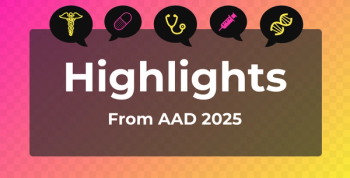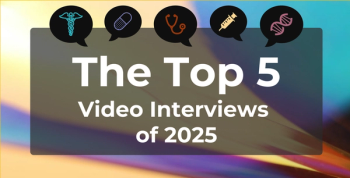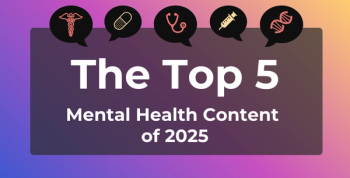
2025 Hypertension Guideline Updates Presented at AHA Scientific Sessions
Key Takeaways
Updated guidelines set lower systolic blood pressure goals, expanded risk-based treatment, and call for stronger implementation to close care gaps.
As more adults develop
Presented at the
“This guideline matters only as much as the success of our implementation,” said Daniel W. Jones, MD, FAHA, chair of the writing committee for these guidelines and professor emeritus at the University of Mississippi School of Medicine.
Lower BP Targets and New Evidence Supporting Intensive Control
The new hypertension guidelines maintain the 2017 categories but introduce important updates to treatment thresholds and goals. It recommends considering an SBP goal of less than 120 mm Hg for adults with hypertension, regardless of cardiovascular risk status, representing a shift toward intensive control, as several trials have shown meaningful reductions in major cardiovascular events, kidney disease, and cognitive decline.
Jones emphasized findings from the China Rural Hypertension Control Project where intensive lowering of BP
The guideline reiterates first-line treatment options but highlights that reaching less than 130 mm Hg—ideally less than 120 mm Hg—requires a combination of lifestyle change, timely medication initiation, and accurate out-of-office BP monitoring.1 The BP target of less than 120 mm Hg applies equally to adults with and without increased cardiovascular risk, but there are different classes of recommendation and levels of evidence supporting treatment for each population.
New Risk Tools, Team-Based Care, and Earlier Medication Use
Keith Ferdinand, MD, chair and director of preventative cardiology and professor of medicine at the Tulane University School of Medicine, outlined the new treatment framework, including earlier initiation of therapy in patients with stage 1 hypertension who fail to improve after 3 to 6 months of lifestyle modification, even when 10-year risk is lower than 7.5%. He highlighted that more than a third of adults with stage 1 hypertension progress to stage 2.
The guideline formally incorporates the AHA’s PREVENT calculator, the first risk estimator to include broader cardiovascular, metabolic, and kidney outcomes. Team-based care is now a class 1 recommendation, reflecting strong evidence that multidisciplinary management improves long-term control. The guideline also gives strong support for home BP monitoring and mandates routine laboratory testing, including universal use of the urine albumin-creatinine ratio.
Ferdinand pointed to the need for accurate measurement and clinician education, noting that BP is “measured poorly in the clinical setting” and that cuffless devices are not recommended—class 3—for hypertension diagnosis or management.
Updates for Diabetes, Obesity, and Chronic Kidney Disease
Sandra Taler, MD, professor of medicine at Mayo Clinic, presented updates for key comorbidities. For adults with diabetes and hypertension, the treatment threshold remains SBP 130 mm Hg or higher with a goal of less than 130 mm Hg, alongside encouragement to achieve less than 120 mm Hg. Taler highlighted randomized evidence from
For individuals with obesity or metabolic syndrome, the guideline notes that glucagon-like peptide 1 (GLP-1) receptor agonists used for weight management “may be effective as an adjunct to lower blood pressure.”1 A recent meta-analysis found a
The guideline also strengthens recommendations for hypertension in chronic kidney disease, stating that the goal should be less than 130 mm Hg, again with encouragement to reach less than 120 mm Hg.1 Angiotensin-converting enzyme inhibitors or angiotensin receptor blockers remain first-line for patients with diabetes and chronic kidney disease or albuminuria; clinicians may allow a creatinine rise up to 30% in the first 4 weeks of therapy initiation.
Implementation Remains the Largest Barrier
Paul Whelton, MD, chair of global public health at Tulane University School of Medicine and immediate past-president of the World Hypertension League, delivered a blunt assessment of the nation’s poor hypertension control rates: only 23% of US adults with hypertension achieve less than 130/80 mm Hg, and even fewer would meet the ideal target SBP of less than 120 mm Hg.
Whelton stressed the disconnect between knowledge and action. “There’s a huge gap or chasm between knowing what is right to be done and actually doing it,” he said, “and we see this a lot in clinical practice.”
Effective implementation strategies outlined in the guideline include:
- Accurately measuring BP
- Using single-pill combination therapy
- Monitoring BP at home
- Offering team-based care
- Addressing social determinants of health
- Using fixed treatment pathways such as “milepost visits”
Despite barriers, Whelton emphasized that solutions are well-established and should be scaled to close treatment gaps. “In summary, there are lots of barriers, but there are many solutions as well,” he closed. “We really need to take advantage of those solutions that are well-described in the guideline.”
References
- Cushman WC, Khan SS, Jones DW, et al. The 2025 guideline for the prevention, detection, evaluation and management of high blood pressure in adults. Presented at: AHA 2025 Scientific Sessions; November 8, 2025; New Orleans, LA.
- Lowering blood pressure significantly reduced dementia risk in people with hypertension. News release. American Heart Association. November 11, 2023. Accessed November 14, 2025.
https://newsroom.heart.org/news/lowering-blood-pressure-significantly-reduced-dementia-risk-in-people-with-hypertension - Bi Y, Li M, Liu Y, et al. Intensive blood-pressure control in patients with type 2 diabetes. N Engl J Med. 2025;392(12):1155-1167. doi:10.1056/NEJMoa2412006
- Ali A, Siddiqui AA, Usman MS, Shahid I, Khan MS, Perswani P. Effect of glucagon-like peptide 1 receptor agonists on systolic blood pressure in patients with obesity, with or without diabetes: a systematic review and network meta-analysis. Clin Obes. 2025;15(4):e70012. doi:10.1111/cob.70012
Newsletter
Stay ahead of policy, cost, and value—subscribe to AJMC for expert insights at the intersection of clinical care and health economics.







































